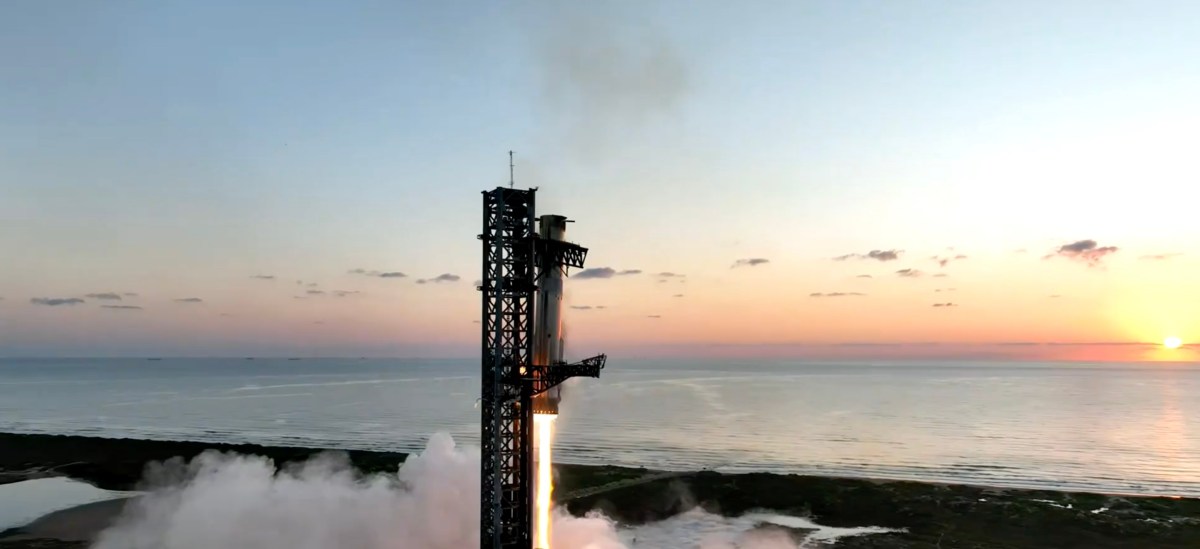SpaceX will attempt to transfer propellant from one orbiting Starship to another as early as next March, a technical milestone that will pave the way for an uncrewed landing demonstration of a Starship on the moon, a NASA official said this week.
Much has been made of Starship’s potential to transform the commercial space industry, but NASA is also hanging its hopes that the vehicle will return humans to the moon under the Artemis program. The space agency awarded the company a $4.05 billion contract for two human-rated Starship vehicles, with the upper stage (also called Starship) landing astronauts on the surface of the moon for the first time since the Apollo era. The crewed landing is currently scheduled for September 2026.
Kent Chojnacki, deputy manager of NASA’s Human Landing System (HLS) program, provided more detail on exactly how the agency is working with the space company as it looks toward that critical mission in an interview with Spaceflight Now. It will come as no surprise that NASA is paying close attention to Starship’s test campaign, which has notched five launches so far.
SpaceX made history during the most recent test on October 13 when it caught the Super Heavy rocket booster mid-air using “chopsticks” attached to the launch tower for the first time.
“We learn a lot each time [a launch] happens,” Chojnacki said.
Chojnacki’s work history includes numerous roles in the Space Launch System (SLS) program, which oversees the development of a massive rocket of the same name that is being built by a handful of traditional aerospace primes. The first SLS rocket launched the Artemis I mission in December 2023, and future rockets will launch the subsequent missions under the Artemis program. No part of the rocket is reusable, however, so NASA is spending upwards of $2 billion on each launch vehicle.
The first contracts for the SLS program were awarded over a decade ago under what’s known as a “cost-plus” model, which means that NASA pays a base amount plus expenses. (This type of contract has been stringently criticized for incentivizing long development timelines and high expenses.) In contrast, HLS contracts are “fixed-price” — so SpaceX receives a one-time $2.99 billion payment provided it meets certain milestones.
Chojnacki said NASA has taken very different approaches to the HLS versus SLS program, even beyond the contracting model.
“SLS was a very traditional NASA program. NASA laid out a very strict set of requirements and dictated propellant inventory, dictated all the things to the various elements. They flowed down. They were cost-plus programs where the aerospace companies would respond, and we would work in a very traditional manner,” he said. “Moving to HLS, we’re doing a lot of moving parts at one time. On SpaceX’s contract right now, for their initial landing, there are 27 system requirements. Twenty-seven, and we kept it as loose as possible.”
Under SpaceX’s contract, they must meet mandatory design reviews, but SpaceX can also propose additional milestones for payment. One requirement that SpaceX requested is the ship-to-ship propellant transfer demonstration. Those tests are set to begin around March 2025, with testing concluding in the summer, Chojnacki said.
“That would be the first time that’s demonstrated on this scale, so that is a big building block. And once you’ve done that, you’ve really cracked open the opportunity to move massive amounts of payload and cargo outside of the Earth’s sphere. If you can have a Starship with propellant aggregation, that’s going to be the next step to doing an uncrewed demonstration.”
In addition to the testing, the next major review of Starship will be the Critical Design Review (CDR) in Summer 2025, which is when NASA certifies that the company met all 27 of those system requirements. Chojnacki said NASA astronauts also meet with SpaceX once a month to provide input on Starship’s interior. The company is building mockups of the crew cabin, including the sleeping quarters and laboratory, at Boca Chica. NASA anticipates getting a design update this month before looking at it during the CDR next year.
That isn’t the only place where NASA has offered its input: It also offered input on some aspects of the rocket design, like the vehicle’s cryogenic components, as well as conducting some testing on the thermal tiles that help keep the cryogenic fuels cold.
If all goes to plan, SpaceX will land astronauts on the moon in September 2026.
“That is definitively the date we’re working towards. We don’t have any known road blocks. We do have some first-time things that have to be demonstrated, and we have a plan in place to go demonstrate those.

